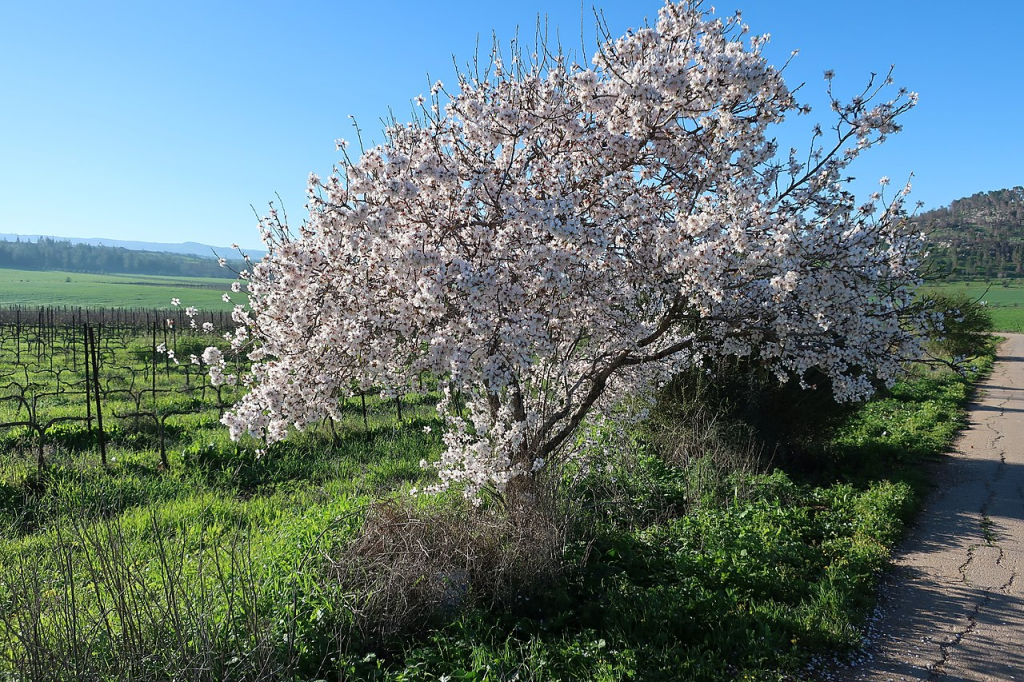
The almond is a deciduous tree belonging to the rose family, Rosaceae, that also includes plums, cherries, nectarines apricots, and peaches and is most closely related to peaches. Almond is native to the Middle East and South Asia dating back thousands of years ago when it was spread to northern Asia and Africa, and southern Europe. According to Greek mythology, the almond was associated with Attis, the consort of the Kybele. The story goes that Agdistis, a lesser god of the Phrygia, was feared by the Olympian gods because she was a hermaphrodite. The Olympians castrated Agdistis and threw the genitals on the ground where they sprouted and grew into an almond tree. When the nymph Nana was sitting beneath the branches of the tree, an almond nut fell into her lap, impregnated her, and resulted in the birth of Attis. The ancient Roman naturalist, Pliny the Elder (died 79 AD), recognizes both sweet and bitter almonds, and notes that the latter is more useful as a medicinal plant. He mentions its use for treating various ailments including sleeplessness, clearing the complexion, enhancing the appetite, treating liver and kidney disease, colic, lethargy, epilepsy, and more. Carbonized remains of almond were found in the soil of the excavated area around ancient Pompeii. Photo Credit Davidbena Wikipedia
The upright tree grows 25-40′ tall and has wide spreading branches and rough gray bark. The bright green leaves are simple and 3-5″ long. The white to pale pink flowers are 1-2″ across and have 5 petals. They appear singly or in pairs in spring before the leaves emerge and give way to oblong, brown fruits, 1 ½ inches long. Although there are two varieties of almond, bitter and sweet, the sweet ones are more commonly grown commercially for their fruit/nut.
Size: 25-40’ H x 20-25’ W
Light: Full sun
Soil: Fertile, deep, well-drained; does not tolerate alkali or salt.
Hardiness: Zones 6-9